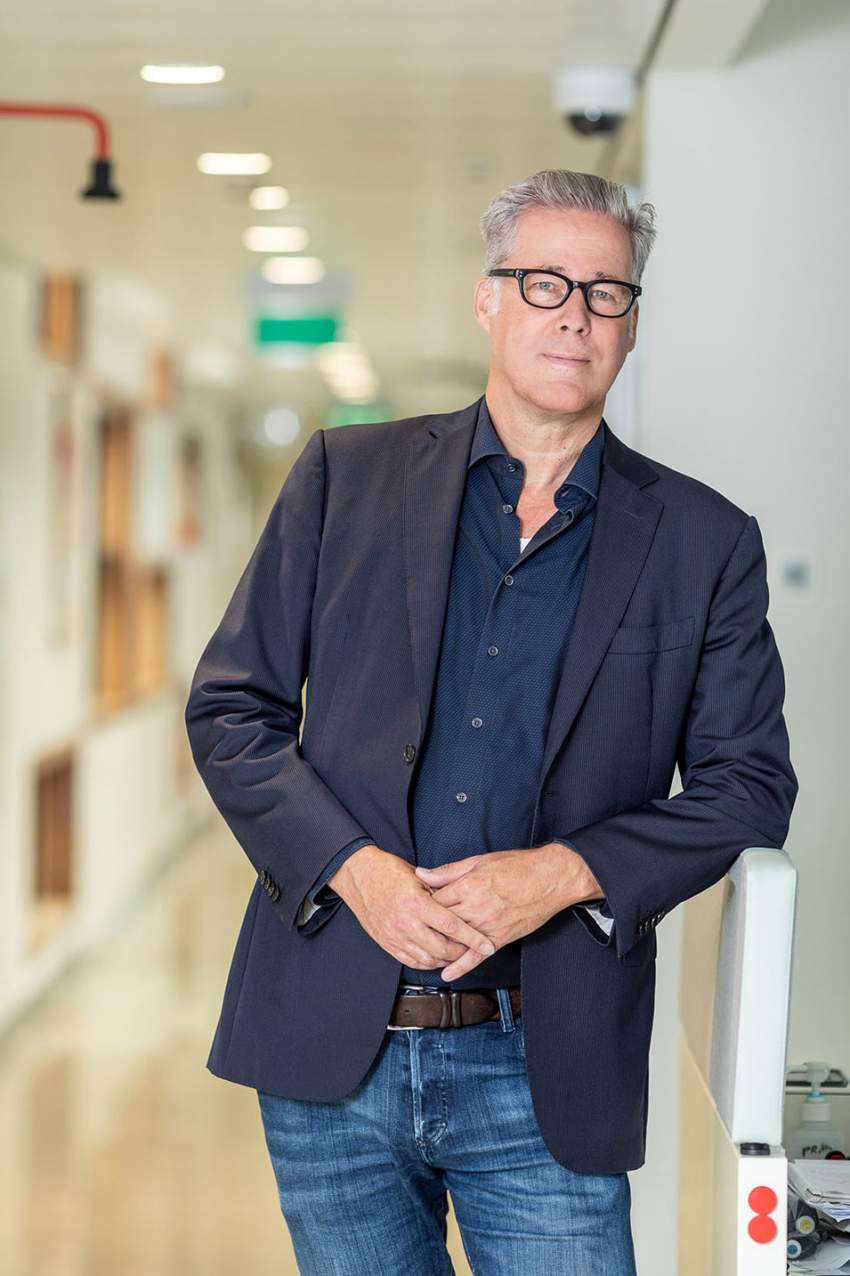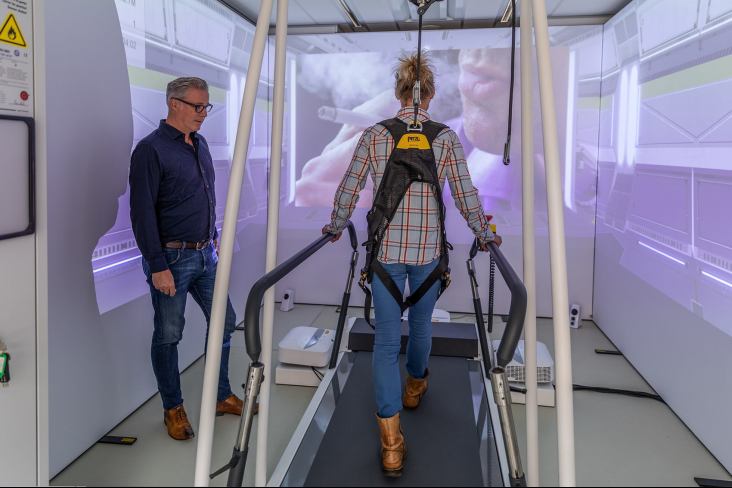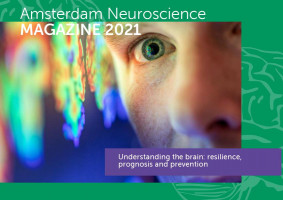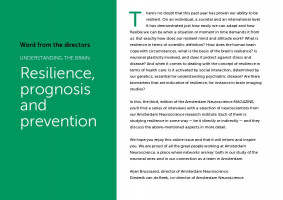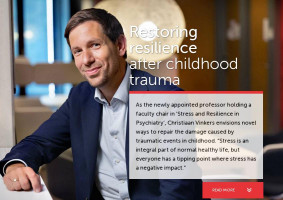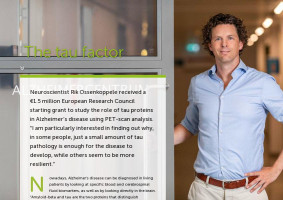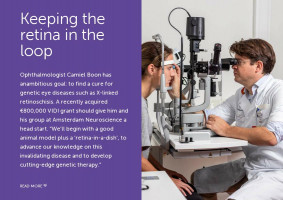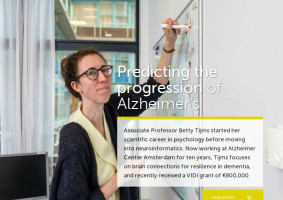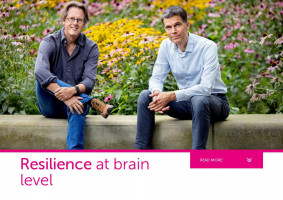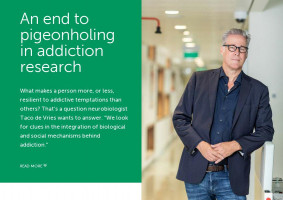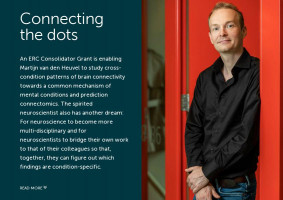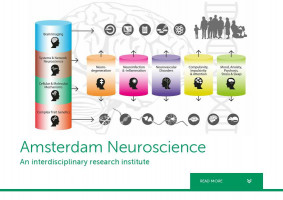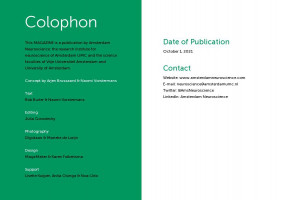As a trained neurobiologist, Professor of Behavioral and Translational Neurosciences Taco de Vries is used to thinking in terms of ‘neurobiological substrates’ when talking about his research into addiction. “But the days of a strict divide between social and biological mechanisms underlying addiction are long gone,” he stresses. “We even include social components in our research with lab animals nowadays.”
Knowing that social environment plays an important role in the addictive behavior of humans, assistant professor Nathan Marchant from De Vries’ lab has developed specific animal tests that address this issue. “Even rats, under the right circumstances, prefer positive social interactions with other rats, over highly addictive substances,” says De Vries. “The most exciting observation in this context is that a repeated social reward can lessen the risk of relapsing into addictive behavior.”
Learning a lesson
“Motivational conflict is another critical component of human addiction, and we can also include that in our lab tests,” De Vries adds. “Rats that learn that consuming addictive substances may or may not lead to a tiny electric shock from the grid that they walk on sometimes completely refrain from taking these substances.”
The reason why some rats stop taking addictive substances when they know it may have negative consequences, while others don’t, is a crucial question for De Vries. “By studying this principle in rats, we might also find out what makes one person more resilient to addiction than another.”
Does the insula hold the key?
De Vries looks for his answers in the brain’s many complex networks. “You’ll never find one single area or one single chemical in the brain that holds all the clues for addiction. The brain’s ‘reward system’ plays a crucial role, just as much as cognitive control or memory. Despite that complexity, we also know that one specific region – the anterior insula cortex – plays a relatively large role in addiction. Some people whose insula is damaged by a hemorrhage, for example, may be released from their smoking addiction from one day to the next. Therefore, we pay extra attention to this area in imaging and anatomical and physiological research.”
The insula also plays a role in new therapies that aim to cure addiction. “In Transcranial Magnetic Stimulation, large coils are used to direct magnetic fields into specific parts of the brain to modulate neuronal activity,” De Vries explains. “International colleagues have already had some success in using Transcranial Magnetic Stimulation aimed at the insula to treat heavy smokers. Together with brain network specialists Menno Schoonheim and Linda Douw, we are going to study whether the insula indeed represents a critical hub in resilience to addiction.”
MeMo lab
In the Memory Modification (MeMo) lab that De Vries co-runs at Amsterdam Neuroscience with professor Ysbrand van der Werf, they are testing a different approach. “Eye Movement Desensitization and Reprocessing has become a strong instrument in psychology. In our lab, we’re using a novel protocol that is based on both Eye Movement Desensitization and Reprocessing and recent insights from animal studies. We know that deep memory paths in the brain strongly affect the persistence of addictive behavior. By keeping those memory paths preoccupied with other tasks, while simultaneously triggering memories associated with addiction in a virtual 3D environment, we try to rewire the paths that trigger addictive behavior. Going forward, we want to include social cues and neurostimulation in these experiments as well. I strongly believe that only by integrating social and biological research, in both humans and animals, progress can be made in making people more resilient to destructive addictions.”
Photography: Marieke de Lorijn
